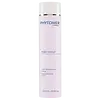What's inside
What's inside
 Key Ingredients
Key Ingredients

No key ingredients
 Benefits
Benefits

 Concerns
Concerns

 Ingredients Side-by-side
Ingredients Side-by-side

Water
Skin ConditioningRosa Damascena Flower Water
MaskingPropylene Glycol
HumectantPEG-7 Glyceryl Cocoate
EmulsifyingPEG-40 Hydrogenated Castor Oil
EmulsifyingTrideceth-9
EmulsifyingChlorphenesin
AntimicrobialGlycerin
HumectantPhenoxyethanol
PreservativeMethylparaben
PreservativeCetrimonium Bromide
AntimicrobialDipotassium EDTA
Triethanolamine
BufferingParfum
MaskingMaris Sal
Skin ConditioningSodium Citrate
BufferingCitric Acid
BufferingUlex Europaeus Leaf/Root/Stem Extract
Skin ConditioningCitronellol
PerfumingGeraniol
PerfumingCI 17200
Cosmetic ColorantWater, Rosa Damascena Flower Water, Propylene Glycol, PEG-7 Glyceryl Cocoate, PEG-40 Hydrogenated Castor Oil, Trideceth-9, Chlorphenesin, Glycerin, Phenoxyethanol, Methylparaben, Cetrimonium Bromide, Dipotassium EDTA, Triethanolamine, Parfum, Maris Sal, Sodium Citrate, Citric Acid, Ulex Europaeus Leaf/Root/Stem Extract, Citronellol, Geraniol, CI 17200
Water
Skin ConditioningParaffinum Liquidum
EmollientDipropylene Glycol
HumectantKaolin
AbrasiveCetyl Alcohol
EmollientCarbomer
Emulsion StabilisingPalmitic Acid
EmollientStearic Acid
CleansingSodium Hydroxide
BufferingPhenoxyethanol
PreservativePEG/PPG-14/4 Dimethicone
EmulsifyingLactose
HumectantParfum
MaskingTocopheryl Succinate
AntioxidantPapain
Skin ConditioningChlorhexidine Digluconate
AntimicrobialPropylene Glycol
HumectantLaminaria Digitata Extract
Skin ProtectingSodium Metabisulfite
AntioxidantHexyl Cinnamal
PerfumingLinalool
PerfumingLimonene
PerfumingBenzyl Salicylate
PerfumingCitronellol
PerfumingGeraniol
PerfumingHydroxycitronellal
PerfumingEugenol
PerfumingCI 42090
Cosmetic ColorantWater, Paraffinum Liquidum, Dipropylene Glycol, Kaolin, Cetyl Alcohol, Carbomer, Palmitic Acid, Stearic Acid, Sodium Hydroxide, Phenoxyethanol, PEG/PPG-14/4 Dimethicone, Lactose, Parfum, Tocopheryl Succinate, Papain, Chlorhexidine Digluconate, Propylene Glycol, Laminaria Digitata Extract, Sodium Metabisulfite, Hexyl Cinnamal, Linalool, Limonene, Benzyl Salicylate, Citronellol, Geraniol, Hydroxycitronellal, Eugenol, CI 42090
Ingredients Explained
These ingredients are found in both products.
Ingredients higher up in an ingredient list are typically present in a larger amount.
Citronellol is used to add fragrance/parfum to a product. It is often derived from plants such as roses. In fact, it can be found in many essential oils including geranium, lavender, neroli, and more. The scent of Citronellol is often described as "fresh, grassy, and citrus-like".
Since the Citronellol molecule is already unstable, Citronellol becomes irritating on the skin when exposed to air.
Citronellol is a modified terpene. Terpenes are unsaturated hydrocarbons found in plants. They make up the primary part of essential oils.
Citronellol is not able to be absorbed into deeper layers of the skin. It has low permeability,
Citronellol is also a natural insect repellent.
Learn more about CitronellolGeraniol is used to add fragrance/parfum to a product. It is the main component of citronellol. It is a monoterpenoid and an alcohol.
Monoterpenes are naturally found in many parts of different plants.
Geraniol can be found in many essential oils including Rose Oil and Citronella Oil. The scent of Geraniol is often described as "rose-like". Many foods also contain Geraniol for fruit flavoring.
Geraniol can irritate the skin when exposed to air. However, irritation depends on the ability of geraniol to penetrate into the skin. In general, geraniol is not able to penetrate skin easily.
Geraniol is colorless and has low water-solubility. However, it is soluble in common organic solvents.
Like citronellol, it is a natural insect repellent.
2,6-Octadien-1-ol, 3,7-dimethyl-, (2E)-
Learn more about GeraniolParfum is a catch-all term for an ingredient or more that is used to give a scent to products.
Also called "fragrance", this ingredient can be a blend of hundreds of chemicals or plant oils. This means every product with "fragrance" or "parfum" in the ingredients list is a different mixture.
For instance, Habanolide is a proprietary trade name for a specific aroma chemical. When used as a fragrance ingredient in cosmetics, most aroma chemicals fall under the broad labeling category of “FRAGRANCE” or “PARFUM” according to EU and US regulations.
The term 'parfum' or 'fragrance' is not regulated in many countries. In many cases, it is up to the brand to define this term.
For instance, many brands choose to label themselves as "fragrance-free" because they are not using synthetic fragrances. However, their products may still contain ingredients such as essential oils that are considered a fragrance by INCI standards.
One example is Calendula flower extract. Calendula is an essential oil that still imparts a scent or 'fragrance'.
Depending on the blend, the ingredients in the mixture can cause allergies and sensitivities on the skin. Some ingredients that are known EU allergens include linalool and citronellol.
Parfum can also be used to mask or cover an unpleasant scent.
The bottom line is: not all fragrances/parfum/ingredients are created equally. If you are worried about fragrances, we recommend taking a closer look at an ingredient. And of course, we always recommend speaking with a professional.
Learn more about ParfumPhenoxyethanol is a preservative that has germicide, antimicrobial, and aromatic properties. Studies show that phenoxyethanol can prevent microbial growth. By itself, it has a scent that is similar to that of a rose.
It's often used in formulations along with Caprylyl Glycol to preserve the shelf life of products.
Propylene Glycol is an odorless, colorless liquid. As a humectant, it helps skin retain moisture. It also aids in delivering active ingredients.
Another role of this ingredient is preventing a product from melting or freezing. Propylene glycol also adds antimicrobrial properties to a product, elongating product lifespan.
This ingredient is considered an organic alcohol and commonly added into both cosmetics and foods.
Those with sensitive skin or conditions may develop a rash when using this ingredient.
Learn more about Propylene GlycolWater. It's the most common cosmetic ingredient of all. You'll usually see it at the top of ingredient lists, meaning that it makes up the largest part of the product.
So why is it so popular? Water most often acts as a solvent - this means that it helps dissolve other ingredients into the formulation.
You'll also recognize water as that liquid we all need to stay alive. If you see this, drink a glass of water. Stay hydrated!
Learn more about Water